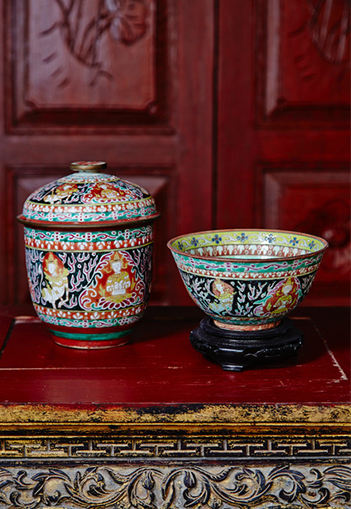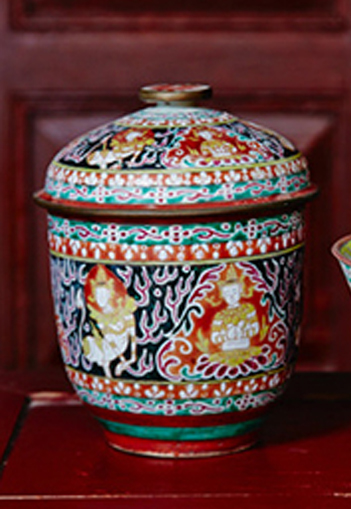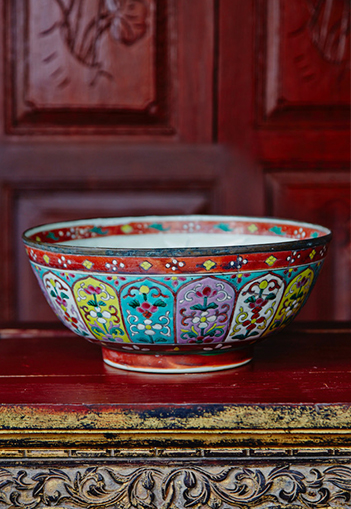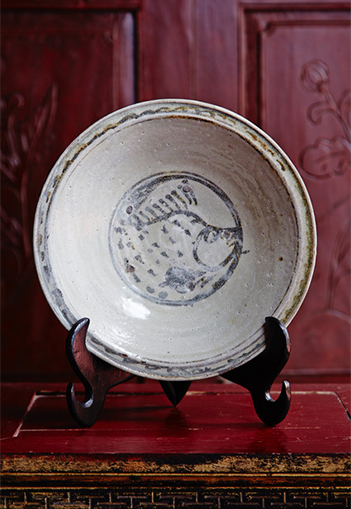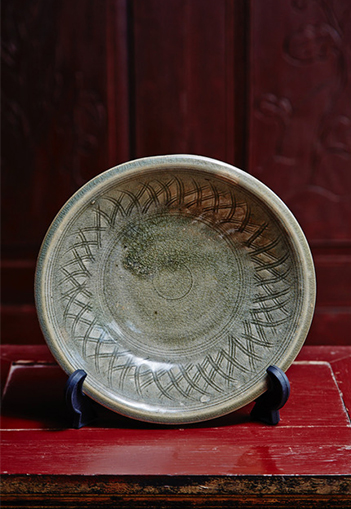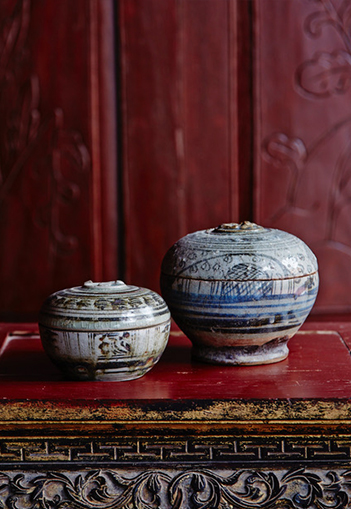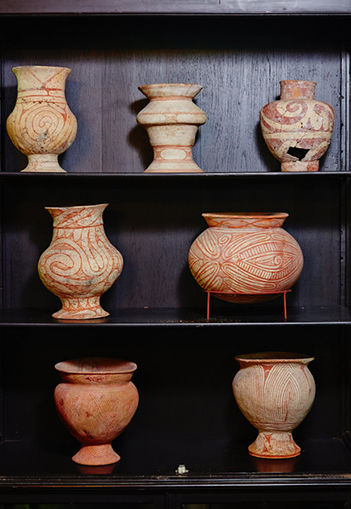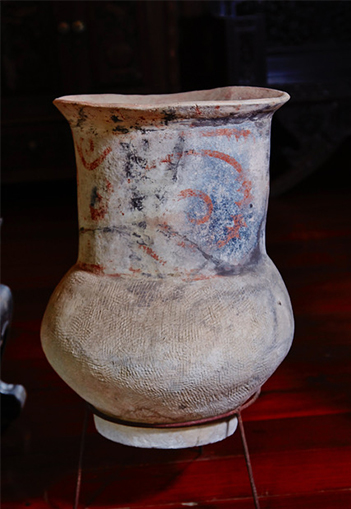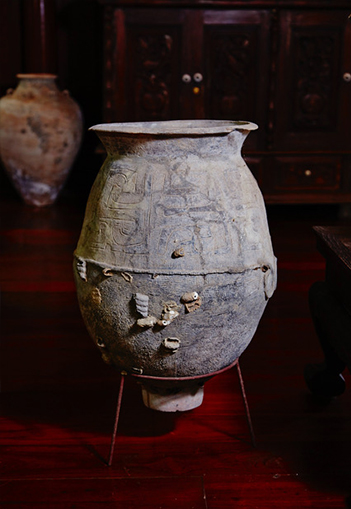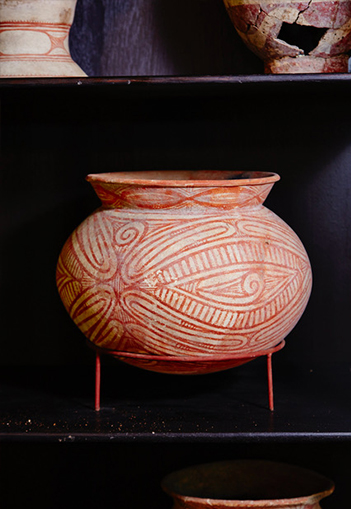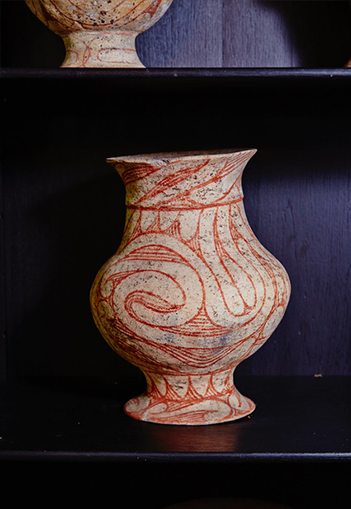Museum

Our Museum consists of a group of Thai classical houses from the late nineteen century represented the Thai houses of central Thailand. The largest house was exquisitely crafted with engraving motifs on inside and outside panels. The curvilinear designs resembling unopened lotus bud shapes of the doors and windows are most remarkable among all the Thai houses. It is vividly decorated with the Thai gold gilded religious furnitures and a gold gilded howdah for the festivity procession.
The middle house is embellished with daily essential objects and a number of Thai traditional paintings.
The third house displays Benjarong wares and Sukhothai wares.
The forth Thai house displays a large collection of Ban Chiang potteries. In the gardens embracing the Museum are decorated with spectacular large Sukhothai jars. At the entrance of the Thai house stands a large lotus stem bowl supplied from Zhejiang Province of China to the royal court of Siam for garden decoration.
The Benjarong Ware
Five colors of porcelain from Zhejiang Province of China commissioned by the king of Ayutthaya starting from 17th Century for the court’s use. The polychrome porcelains were decorated to the Thai tastes with motifs of flora, plants, flames as well as celestial figures (Theppanom) and cultural symbols such as Garuda.
Later the “Lai mam thong” the elaborate golden motifs were intro duced, added value to the wares in the reign of King Rama the Second of Rattanakosin Period. Later the use of Benjarong is extended to aristocrat and prominent families.
Si Satchanalai Wares & Sukhothai Wares
High fired, glazed stone wares were produced as export and domestic wares of the flourished kingdom of Sukhothai and its secondary city of Si Satchanalai, 70 kilometer north of Sukhothai in the Fourteenth Century. In the middle of this Century, the kingdom became a vassalage of Ayutthaya and was incorporated into that kingdom around the middle of the fifteen Century. The Sukhothai pottery were brought to an around Seventeen Century forever.
An estimated 400 kilns were operating in the city of Sukhothai and Si Satchanalai. The Sukhothai wares are bowls, jars, jarlets, kendis, small figurines and architectural fixtures. Bowls of different sizes with dark flowing lines with motif of floral and fishes designs are the typical wares produced in this era.
Si Satchnalai wares are Brown or Black Wares with represented the wares of Yuan dynasty. The main wares are jars, jarlets, bowls, kendis and small figurines. The green glazed wares or celadon wares are the most appreciated today from its lustrous green and pale blue glaze applied to the plates and small trays with pedestal.
Ban Chiang pottery
The Ban Chiang pottery house displays a large collection of Ban Chiang prehistoric wares and artifacts to preserve the culture of the archaeological heritages and artistic tradition of prehistoric villagers in the northeastern part of Thailand. The Ban Chiang Culture flourished from Bronze Age and later to the Iron Age in this area from about 2100 BC to around 400 AD. Ban Chiang archaeological sites has been preserved as one of the world heritage by UNESCO in 1992.
The boundary of the Ban Chiang Cultural Tradition covers more than 49,000 Square Kilometers on Karat plateau of Northeast Thailand. From the first scientific excavation of 1967, skeletons associated with the red painted potteries, glass beads and bracelets made of iron and bronze were founded. Later altogether 123 burials of different periods from Neolithic Period to the Bronze Age were founded. These excavations resulted a wealth of information of early metallurgy, agriculture, burial practices, art and basically the way of life of these prehistoric villagers.
The Potteries of the Ban Chiang Cultural Tradition
The unbelievable verities of pottery types and forms especially the attractive red painted potteries with swirling spirals and geometric designs and the cord mark incised designs. Black ware of the Early Period are the main as attraction of our Ban Chiang collection. Another peculiar vessels are the burial jars used the practice of burying young children which was common in the Early Period.
